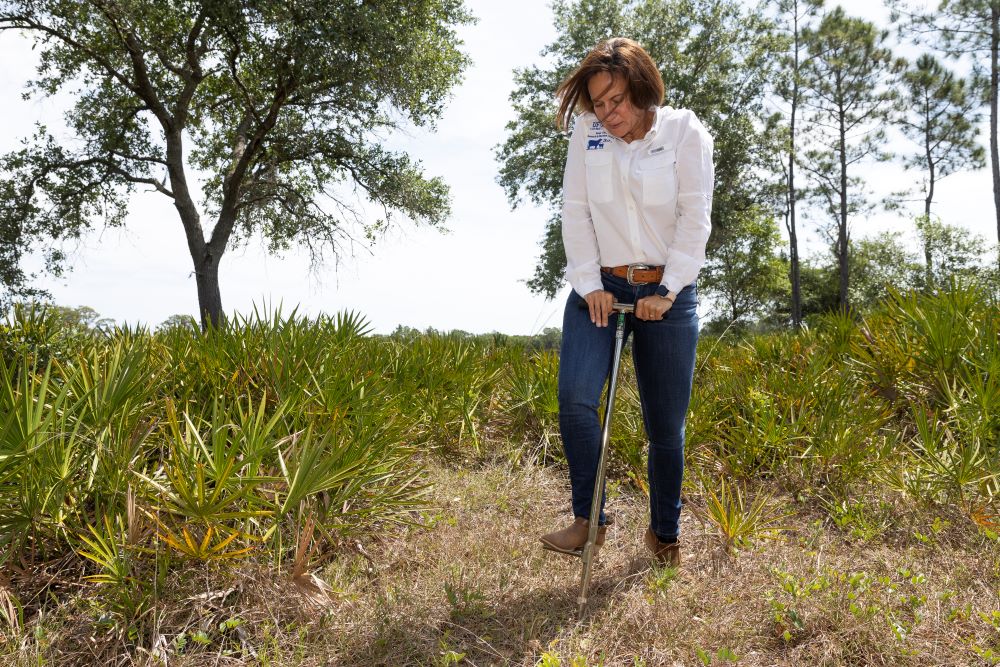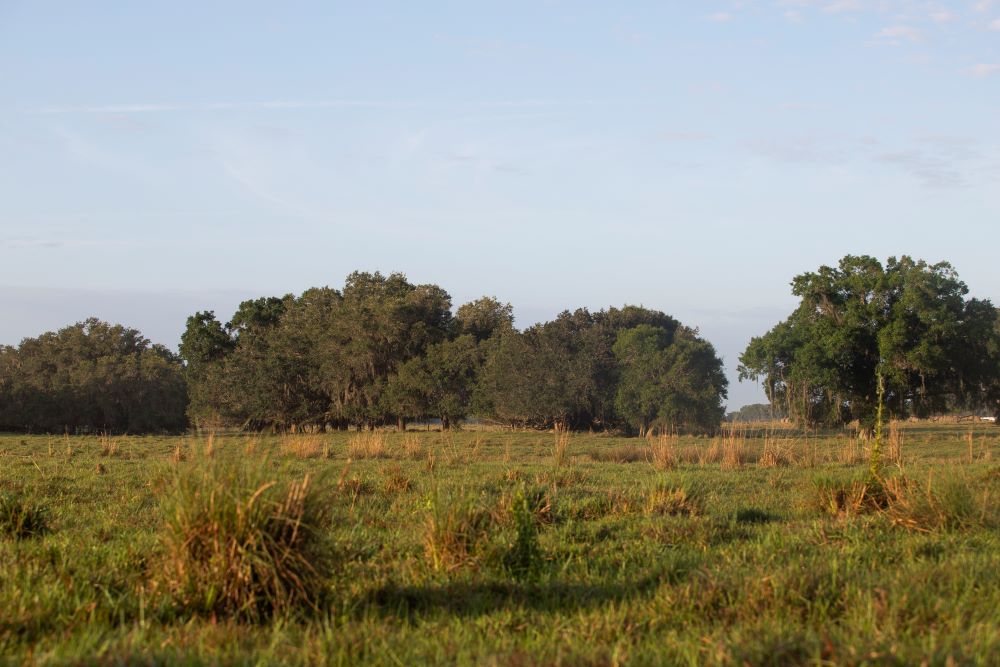By Brad Buck, UF/IFAS Communications
Soil can store carbon, reducing greenhouse gas concentrations from the atmosphere, and managing grazing lands in the best ways can increase our ability to store carbon in the soil.
But insufficient research into how to better sequester carbon can lead to misinformation for ranchers, new University of Florida research shows.
In her review of existing research of grazing-land management in the southeastern United States, Maria Silveira, a UF/IFAS professor of soil, water, and ecosystem sciences, identified 27 peer-reviewed articles addressing the effect of land management on soil carbon sequestration.

Of the studies she reviewed, Silveira found most common practices included:
- Grazing intensity. This amounts to the number of animals on a given amount of land over a certain period of time.
- Stocking methods — With continuous stocking, animals have unrestricted access to a unit of land during the grazing season. With rotational stocking, one portion of pasture is grazed at a time, while the rest of the pasture rests.
- Defoliation regimens — Do you bale the hay or let the animals graze it?
But the 27 articles do not provide enough data on land-use management practices for optimal soil carbon storage in the Southeast, said Silveira.
“We need to preserve grazing-land ecosystems and conduct more research, particularly in the Southeast,” she said, adding that, “Grazing lands can store lots of carbon because they’re not disturbed much. You don’t plow under the land every year, like you would on a farm. Also, the vegetation effectively fixes carbon dioxide that comes from the atmosphere.”
Plants capture atmospheric carbon via photosynthesis. As plants decompose, carbon is stored in the form of soil organic matter.

The viability of voluntary carbon-capture programs as a value-add for ranchers is limited by several factors. Those include the concept of additionality, which implies that carbon sequestration is directly linked to new practices and/or new stored carbon, Silveira said.
That’s why she suggests ranchers listen with skepticism to carbon trade marketers.
Carbon reduction projects presented by those in the carbon market are usually based on models that are not specific to the Southeastern United States, she said.
The upshot is that native and cultivated pastures in the Southeast can be highly productive. But increasing – or in some cases even maintaining – soil carbon levels can be challenging because of warm and humid climate that also favor carbon decomposition. “There is no doubt that this topic should and will continue to be relevant in years to come, particularly in tropical and subtropical regions,” Silveira said.
This piece was originally published at https://blogs.ifas.ufl.edu/news/2024/04/16/uf-research-proper-grazing-land-management-can-increase-soil-carbon-storage-but-more-research-needed/.
Sign up for The Invading Sea newsletter by visiting here. If you are interested in submitting an opinion piece to The Invading Sea, email Editor Nathan Crabbe at nc*****@*au.edu.



